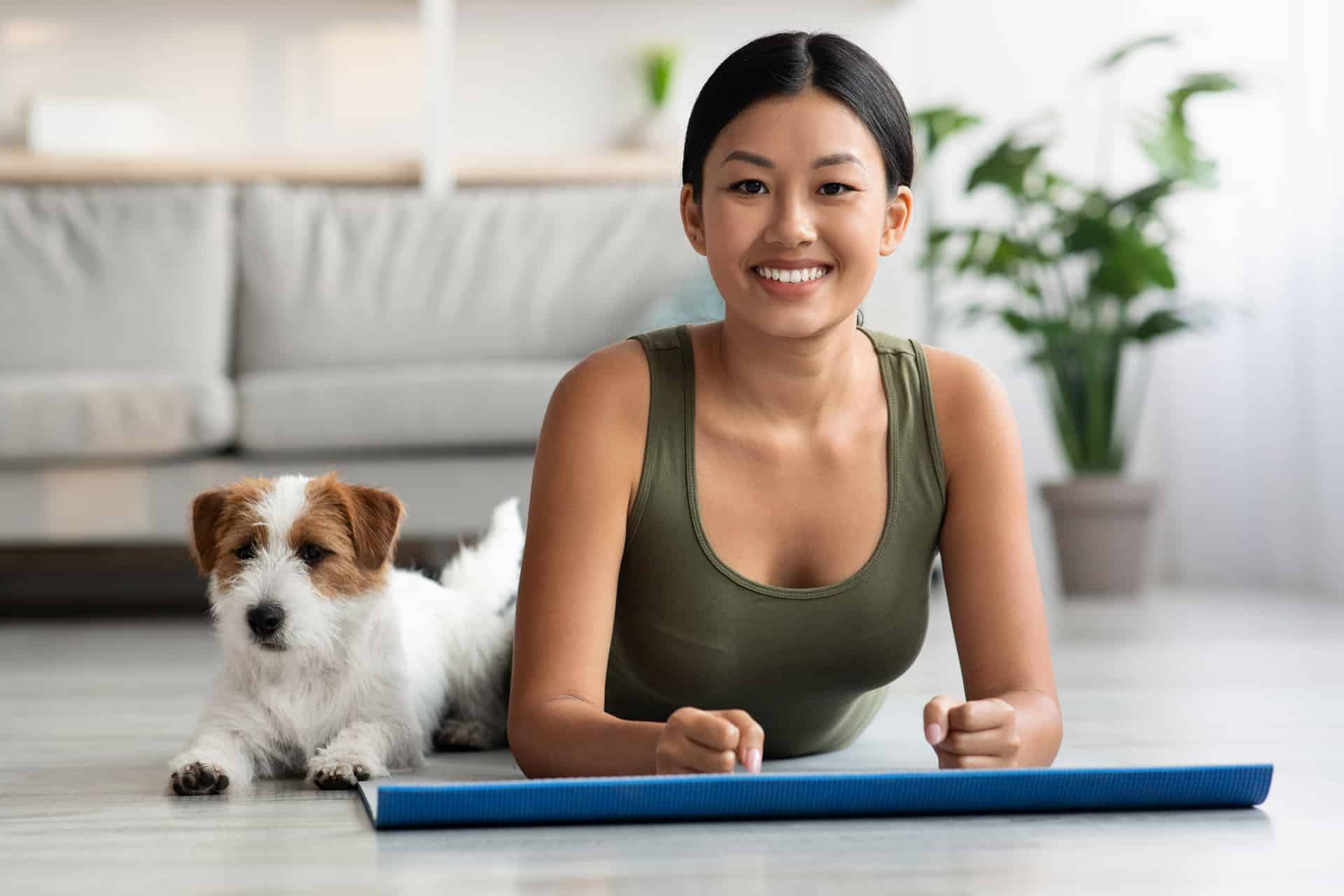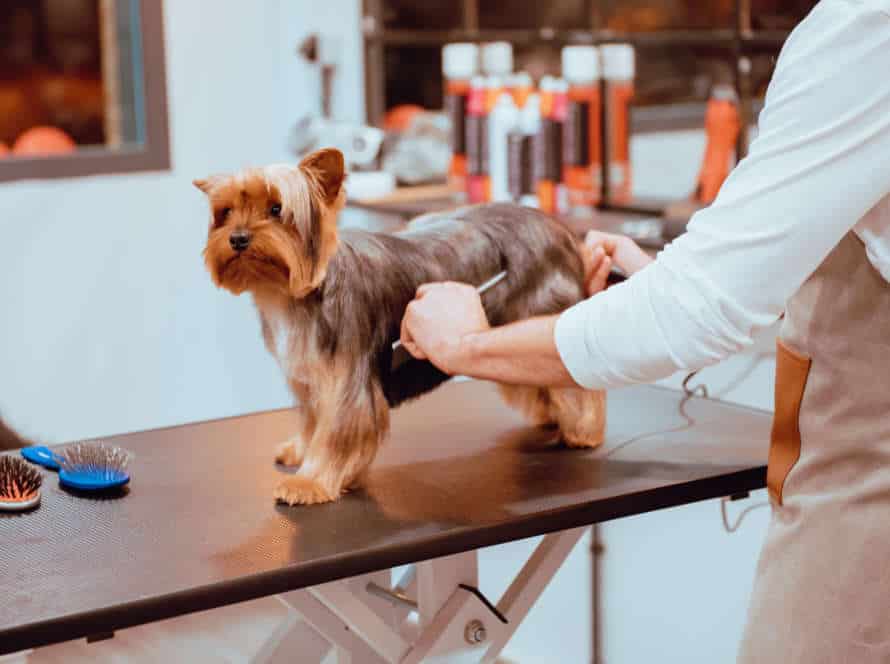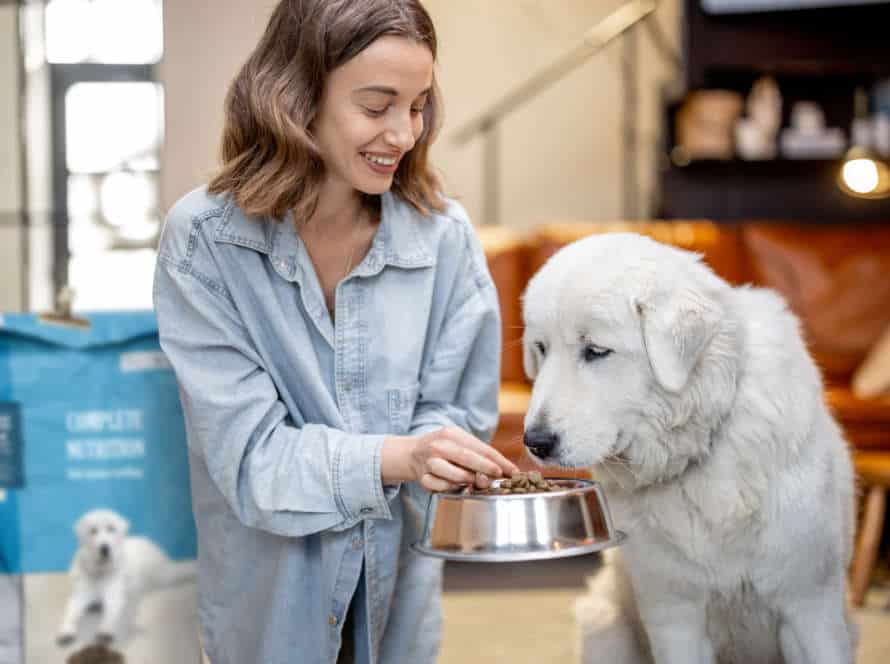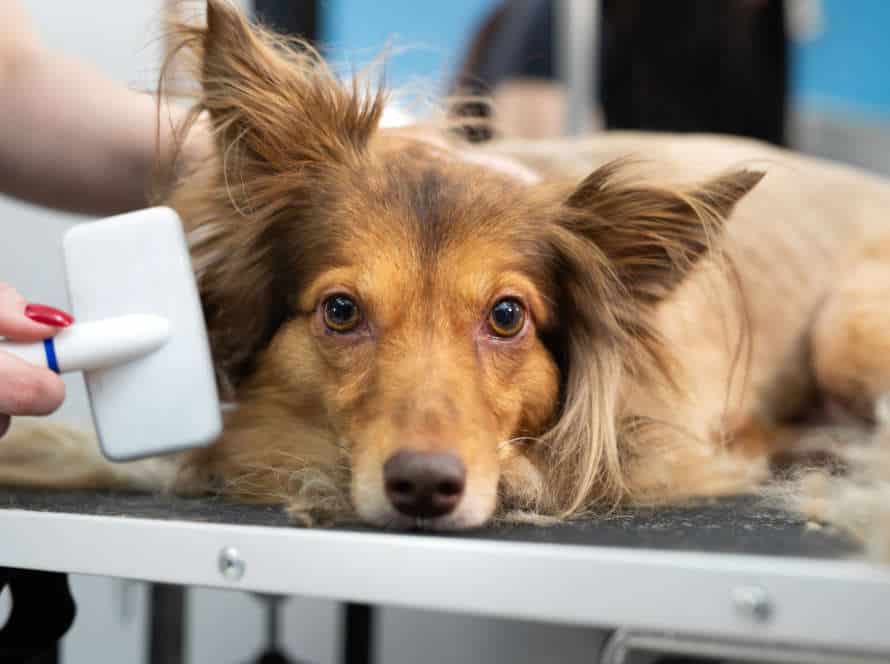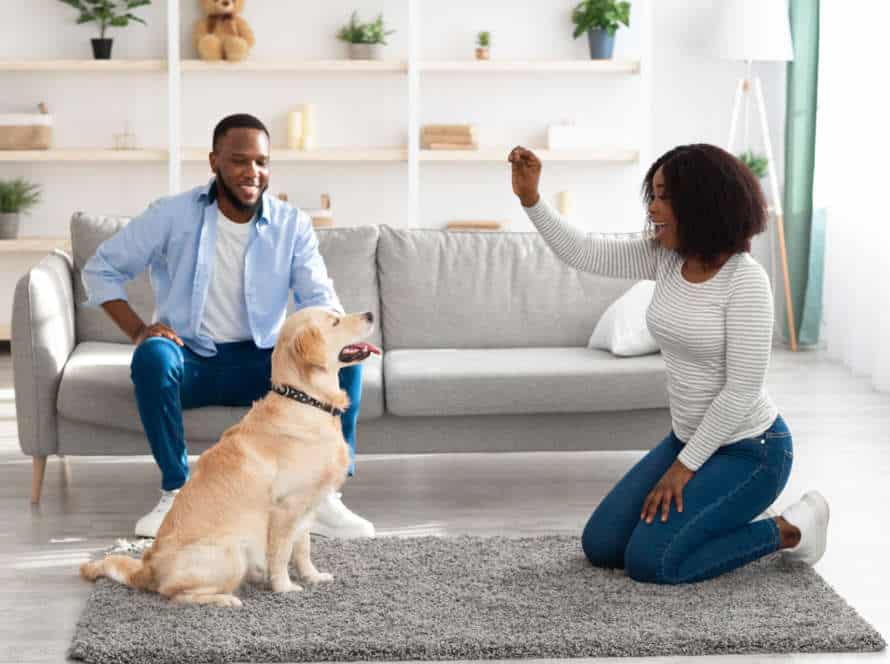Understanding Your Puppy’s Exercise Needs
It’s important to know your pup’s needs for safe exercise. How much should they get? Identifying activity levels is key. Let’s check out a proper exercise plan for your pup! Their development – physical and mental – depends on it.
Factors to consider when exercising your puppy
Exercising your pup is essential for their health and happiness. However, there are a few things to bear in mind before you start exercising them:
- Age: Puppies need different exercise depending on their age and breed. Younger pups should only do short bursts and take frequent breaks.
- Breed: The breed of your pup affects their exercise needs. Some need more intense activities, while others prefer low-intensity ones.
- Health: Health problems like joint or heart problems can limit your pup’s ability to exercise. Ask your vet before starting an exercise program.
- Climate: The weather and temperature can affect how much your pup can exercise. Don’t exercise them in very hot or cold times of the day.
- Duration: Start with shorter exercise sessions and increase them gradually as your pup gets used to it.
By taking these factors into account, you can provide your pup with the best exercise for their growth and development.
Common mistakes when exercising your puppy
It can be tempting to give your pup lots of exercise, but keep in mind that pups need different activity than adult dogs. Here are some bloopers to avoid when exercising your puppy:
- Don’t over-exercise them. Their bones and muscles are still developing and can easily get hurt if they do too much.
- Provide structure and stick to a routine. This way, they won’t get overstimulated or anxious.
- Always look out for signs of fatigue. Puppies may not know when to stop playing. So, take breaks and watch their behavior.
- Don’t forget leash training. It keeps them safe and teaches them good behavior around others.
By avoiding these mistakes, you’ll help ensure your pup is content, healthy, and well-exercised.
The importance of variety in puppy exercises
Puppies need variety in their exercises for their health, engagement, and stimulation. Younger dogs have a lot of energy, and activities each day help them stay fit and cheerful.
Why variety is so essential:
- Different activities keep them interested and avoid boredom.
- Physical needs like core strength, stamina, and coordination are addressed.
- Mental stimulation is as necessary as physical exercise. Changes in routines help the pup learn and remember.
Try out new and fun games like agility courses, fetch, hide and seek, or swimming. Don’t forget to give them breaks, hydration, and rest. This will help your pup grow and strengthen the connection between you and your pup.
Essential Puppy Exercises
It’s essential to give your pup the correct amount of exercise daily. Exercise not only promotes physical health, but also mental stimulation and socialization. This guide will help you understand how to safely and effectively exercise your puppy, including:
- Types of exercises
- How much exercise to provide
- Tips for being safe when exercising with a pup
Walking on a leash
To help your pup, leash-walking is key. It keeps ’em in check and gives them a great way to exercise and socialize.
Here’s some helpful advice:
- Start with lightweight leashes and collars.
- Go for a peaceful, secure outdoor space.
- Use voice commands and treats to praise good behavior.
- Go slow, increasing the distance and time as you go.
- No tugging or pulling – it can hurt.
- Always prioritize safety during walks.
Basic Commands with Treats
Training puppies with treats is essential. It helps them understand obedience and encourages good behavior. Here are the 5 basic commands to teach your pup:
- Sit: Hold a treat above their head and say “sit.” When they sit, give them the treat plus praise.
- Stay: Ask your pup to sit, then move a few steps away. Say “stay.” Gradually increase the distance and duration. Give treats and verbal praise when they obey.
- Come: Stand a few feet away and call their name, followed by “come.” Reward them with a treat and praise when they come back.
- Heel: Use a treat to lure them to walk beside you. Reward them when they stay there. Increase the duration and reduce the treats.
- Down: Have them sit, then hold a treat near the floor and say “down.” Give a treat when they lie down.
Practice these exercises regularly with treats. This will help your pup learn good behavior and listening skills.
Fetch and Retrieval Games
Fetch and retrieval games are a must for puppies! They give physical and mental stimulation. Here are some tips to play fetch with your puppy:
- Start in an enclosed, safe space with no potential dangers.
- Use a light toy; it should be easy for the puppy to carry and won’t hurt if dropped.
- Toss the toy short at first. Gradually increase the distance as the pup gets more skilled.
- Praise and treat your pup for bringing back the toy.
- Be aware of your puppy’s energy levels. Stop if they seem too tired.
Playing fetch is not just fun, but it helps build a connection between you and your pup.
Water-Based Exercises
Cool off your pup on these hot summer days with some water-based exercises! These activities are great for toning muscles and keeping fit. Plus, it’s a great way to bond with your puppy.
Here are some ideas for you to try out:
Swimming
Swimming is a great way to exercise pups! It helps their heart, muscles and joints. For safe swimming, follow these tips:
- Introduce pup to water gradually. Start with a shallow pool and let pup explore.
- Make sure water’s not too hot or cold – it should be refreshing!
- Use a dog-friendly pool or life jacket if pup’s not a strong swimmer.
- Keep an eye on pup while swimming and make sure they’re safe and calm.
- Always end the session with praise, treats and a good towel-dry!
Sprinkler Play
Sprinkler Play is a fun and safe way to get your pup moving! Here are some tips for a successful play session:
- Check the temperature – Make sure the water isn’t too hot or too cold.
- Supervision – Always keep an eye on your pup to prevent accidents.
- No forcing – If your pup isn’t into it, don’t push them.
- Hydrate – Provide plenty of fresh water before and after.
- Dry off – Towel off your pup post-play to prevent skin irritations.
Pro Tip: Start with short sessions and go from there. Safety first!
Kiddie Pool Games
Kiddie pool games are a great way to exercise your pup, and keep them cool in the summer heat. Here’s some water-based activities you can do with your pup:
- Fetch – Teach your pup to fetch a ball or toy from the shallow end of the pool.
- Chase – Run around the perimeter of the pool and encourage your pup to follow.
- Sprinkler play – Set up a sprinkler near the pool for fun and refreshing play.
- Splashing – Use a pool noodle or splash ball to create splashes and get your pup involved.
Supervise your pup when they’re in the pool. Make sure they wear a well-fitting life jacket. Don’t push them beyond their physical limits.
Pro Tip – Have fresh water available for your pup to drink during and after exercise, to avoid dehydration.
High-Intensity Exercises
High-intensity exercises can help puppies get strong, agile, and balanced. Do intervals of exercise, with rest in between. Before beginning any exercise program, speak to a vet to check it’s safe for your puppy.
Let’s talk about the advantages of high-intensity exercises, how to do them correctly, and the risks connected with them.
Agility Training
Agility Training is an intense exercise that can help your puppy develop physical abilities, balance, coordination, and overall health. But, it’s important to stay safe while exercising your pup. Here’s a guide to help you do just that:
- Warm up your pup before starting exercises.
- Introduce the exercises gradually.
- Reward good behavior with positive reinforcement.
- Keep an eye out for exhaustion or injury.
- Use equipment that can take your pup’s weight and size.
- Consider breed and age before starting any routine.
- Talk to the vet before beginning a new routine.
By keeping these tips in mind, you can properly and safely train your pup with agility!
Hide-and-Seek
Hide-and-Seek is an exciting way to get your pup in shape. It lets them expend energy and improves their mental and physical agility.
Here’s the drill:
- Start by hiding in a place that’s easy to spot.
- Call your pup’s name.
- When they find you, give them lots of love and praise.
- Increase the difficulty of the hiding spots as your pup gets better.
- Switch roles and have your pup hide instead.
Keep the game safe. Don’t go near stairs, sharp corners, or unsteady furniture. Supervise your pup during the game.
Running and Jogging
‘Running and Jogging’ doesn’t fit the context of ‘How to Safely Exercise Your Puppy: A Comprehensive Guide’. That’s because puppies need low-intensity exercises, not high-intensity ones.
So, let’s look at some low-impact exercises for puppies:
- Walking helps them develop endurance, strengthen their bones, and promote physical + mental well-being.
- Stair climbing lets them build balance, endurance, and strength, but they should avoid it too often to prevent joint injuries.
- Tug-of-war builds strength, endurance, and social skills, but use a soft rope or toy to prevent mouth injuries.
- Indoor play is great when outdoor activities aren’t possible.
Remember, puppies need different exercises than adult dogs. So, talk to your vet to figure out the best routine for your pup.
Indoor and Low-Impact Exercises
Exercise your puppy, indoors or out! Low-impact exercises are great for pup’s muscle and joint strength. They keep your pup healthy and active. Know what activities are best for them. Here’s a look at some options: safe development of muscle, joint strength, and more! Keep them safe in home or nearby area. Have fun!
Stairs
Stairs can be a fun way to get some indoor and low-impact exercise for both you and your pup. Here are some tips to keep in mind:
- Start small: Especially if they’re young or new to stairs. Begin with a few steps and increase them as they become more comfortable.
- Observe: Supervise your pup to make sure they don’t fall or get hurt.
- Use rewards: Offer treats and praise when they climb the stairs successfully. This will help them connect the activity with good feelings.
- Avoid high-impact: Until they are fully grown, avoid high-impact activities with your pup to prevent injury.
By following these tips, you can safely and effectively make stairs part of your indoor exercise with your furry friend!
Treadmill
Treadmill exercises are great to exercise your puppy indoors. They don’t put too much pressure on their growing joints. Here are a few tips to help you:
- Introduce your pup to the treadmill slowly. Start with low speed and short sessions. Reward them.
- Use a harness, not a collar, to avoid choking or neck injuries.
- Monitor your puppy for signs of fatigue, dehydration, overexertion, or injury.
- Increase duration and intensity of the sessions over time.
- Always supervise them when on the treadmill. Don’t leave them unattended.
- With the right training, a treadmill can be a great way to keep your puppy mentally and physically active in the winter.
Interactive Toys and Puzzles
Interactive toys and puzzles are awesome for your pup’s indoor, low-impact exercises. Not only entertaining, they also give mental and physical stimulation. Here are some ideas:
- Kong toys – stuff them with treats, peanut butter or dog food to keep your pup busy and their brain engaged.
- Puzzle feeders – they have to figure out how to get their food or treats out of the toy.
- Interactive ropes and balls – engage in playtime with your pup and both of you can get exercise and have fun.
Always supervise your puppy when playing and never leave them unsupervised with objects that may be a choking hazard.
Pro tip: Change your pup’s toys and puzzles regularly to keep them mentally excited and avert boredom.
Frequently Asked Questions
Q: At what age can I start exercising my puppy?
A: Puppies can start light exercise at around 3 months of age, but it is important to start slowly and gradually increase intensity as they grow and develop.
Q: What kind of exercises are safe for puppies?
A: Low-impact activities such as walking, gentle playtime, and short training sessions are safe for puppies. High-impact activities such as jumping and running should be avoided until they are fully developed.
Q: How long should I exercise my puppy for?
A: Depending on the age and breed, puppies should generally get 20-60 minutes of exercise per day, broken up into shorter sessions throughout the day.
Q: How can I tell if my puppy is getting too much exercise?
A: Watch for signs of fatigue, panting, or excessive thirst. If your puppy starts to slow down, it is time to stop exercising.
Q: Is it safe to exercise my puppy in extreme temperatures?
A: It is best to avoid exercising your puppy in extreme heat or cold. If you must exercise in these conditions, watch for signs such as excessive panting or shivering and stop exercising immediately if you notice any signs of distress.
Q: When should I consult a veterinarian about my puppy’s exercise routine?
A: If you notice any signs of pain, lameness, or difficulty breathing during exercise, or if you have any concerns about your puppy’s health, it is important to consult with a veterinarian before continuing their exercise routine.

